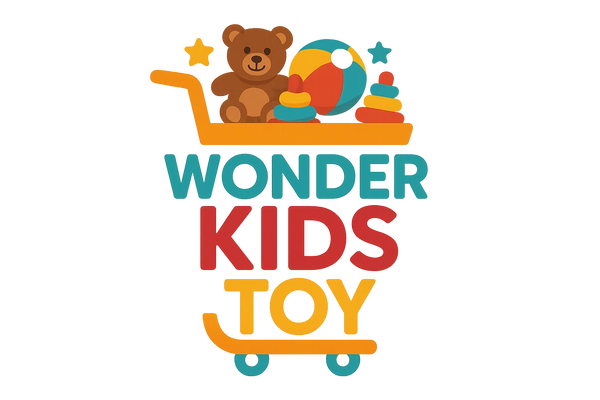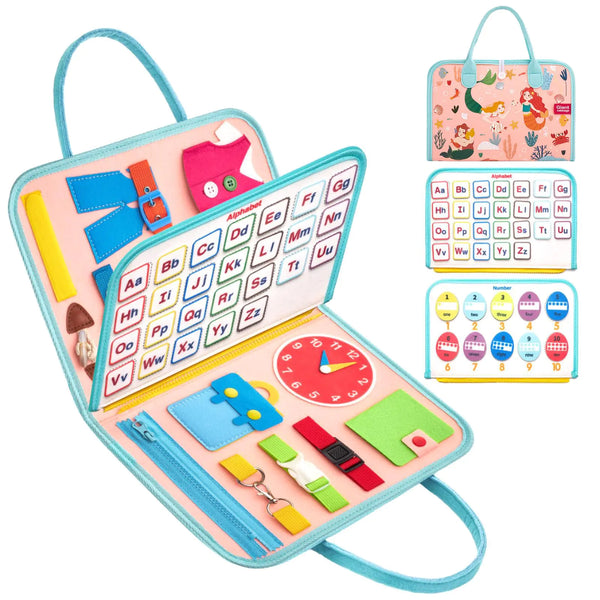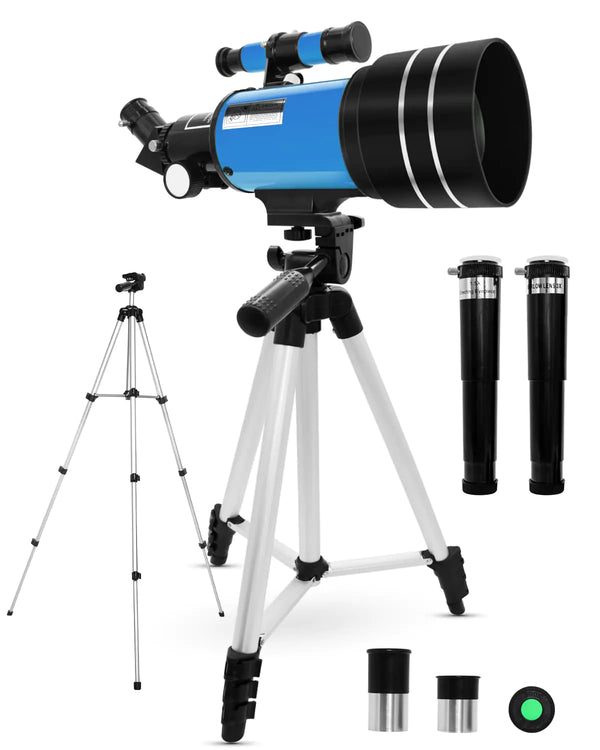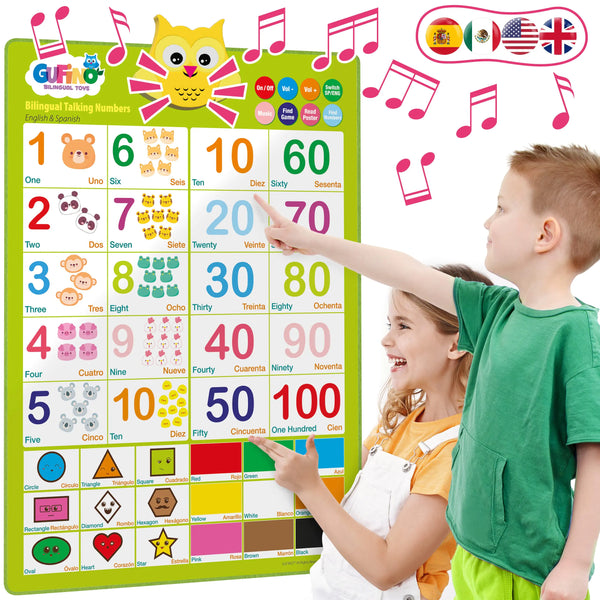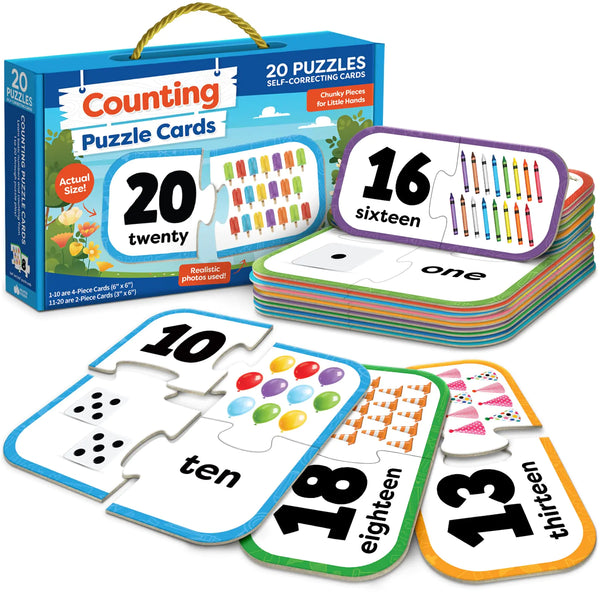Choosing the right toys for your child can be tough. There are so many options out there. I'm here to help by talking about Montessori toys and their benefits.

Montessori materials help kids learn through play. They support a child's growth in many ways. Knowing about Montessori toys can help you pick the best ones for your child.
Key Takeaways
- Understanding the benefits of Montessori toys
- How to choose Montessori toys based on your child's age and developmental stage
- The importance of educational play in child development
- Tips for selecting the right Montessori materials
- How Montessori toys can support your child's learning and growth
Understanding the Montessori Philosophy
Dr. Maria Montessori started the Montessori method. It aims to make kids independent, curious, and love learning. Kids learn by doing, playing together, and exploring on their own.
Core Principles of Montessori Education
The Montessori way has key principles. Children learn on their own and use specialized materials to grow. This helps them think and move better.
Another essential part is playing together. This helps kids learn to solve problems and think critically. It also teaches them to be independent.
| Core Principle | Description | Benefit |
|---|---|---|
| Self-Directed Learning | Children learn at their own pace | Fosters independence and curiosity |
| Hands-On Activity | Using specially designed materials | Develops cognitive and motor skills |
| Collaborative Play | Promotes social interaction | Enhances social skills and learning |
How Montessori Toys Support Child Development
Montessori toys help kids grow in many ways. They improve thinking, moving, and social skills. These toys are crafted from natural materials and are designed to last a long time.
With Montessori toys, children develop stronger problem-solving and critical thinking skills. They also improve their fine motor skills and hand-eye coordination. These toys make learning a fun and exciting experience.
What Makes a Toy "Montessori"?
A Montessori toy must follow key principles. These include simplicity, durability, and educational value. These ideas are based on the Montessori philosophy. It focuses on learning through hands-on experiences and promoting independence.
Key Characteristics of Montessori Materials
Montessori materials are known for their simplicity and durability. They also use natural materials. Some essential traits are:
- Self-correcting: These materials allow kids to learn independently, making mistakes and correcting them.
- Minimalist design: Montessori toys are simple. They focus on one idea or skill at a time.
- Natural materials: Wood and cotton are preferred over plastic.
Natural Materials vs. Plastic Alternatives
Choosing between natural materials and plastic is key in Montessori toys. Natural materials have many benefits:
- Durability: They last longer than plastic.
- Aesthetic appeal: Natural materials have a more appealing look, creating a nice space for kids.
- Sensory experience: They offer a deeper touch and feel, with different textures.
By selecting Montessori materials made from natural materials and featuring innovative design, parents help their children learn in a fun and supportive way.
The Benefits of Montessori Toys for Child Development
Montessori toys help children grow in many ways. They improve thinking, movement, and overall well-being, and become independent and confident. Using these toys can help your child succeed.
Cognitive Development Benefits
Montessori toys help children think and learn independently. Puzzles and games teach problem-solving. Materials like sandpaper and texture boxes improve touch skills. These activities help kids develop a lifelong love of learning.
Motor Skills Enhancement
Montessori toys also boost motor skills. Activities such as stacking blocks and pouring water can improve hand-eye coordination. These skills are key to writing and taking care of oneself later on.
Independence and Confidence Building
Montessori toys help kids become independent and confident. They learn to do things on their own and make choices. For example, using a dressing frame helps kids feel good about dressing themselves.
Let's look at how Montessori toys differ from traditional ones:
| Developmental Aspect | Traditional Toys | Montessori Toys |
|---|---|---|
| Cognitive Development | Often focuses on entertainment | Designed to stimulate learning |
| Motor Skills | May not require active manipulation | Encourage fine motor control |
| Independence | Can foster dependency | Promote self-directed learning |
The Ultimate Guide to Choosing the Best Montessori Toys for Every Age
Understanding Montessori education helps in picking the right toys. These toys should be both fun and educational. The Montessori method focuses on self-directed learning and hands-on activities.
Factors to Consider When Selecting Age-Appropriate Toys
When selecting Montessori toys, consider the child's age, interests, and developmental stage. Age-appropriate toys match the child's abilities and challenge them to learn and grow. For infants, toys that stimulate their senses are best. Toddlers need toys that help with practical life skills.
Preschoolers excel with toys that enhance fine motor skills and introduce basic math concepts. Choose toys made from natural materials. They are more tactile and visually pleasing, aligning with Montessori principles.
Observing Your Child's Interests and Developmental Needs
Watching your child helps you understand their interests and needs. By noticing what they enjoy, you can find the right Montessori toys. These toys will engage and challenge them, supporting their cognitive, motor, and social development.
If a child loves blocks, it shows they're interested in fine motor skills and spatial understanding. Wooden blocks or a stacking toy are great for supporting this interest.
Montessori Toys for Infants (0-12 months)
Infants are naturally curious. Montessori toys meet their desire to learn and explore. They discover the world through their senses and movements.
Sensory Development Toys
Sensory development is key for infants. Montessori toys stimulate their senses. They help develop visual, auditory, and tactile awareness.
Mobiles and Visual Stimulation
Montessori mobiles grab an infant's attention. They encourage visual development. These mobiles have simple, high-contrast designs for visual tracking.
Tactile Exploration Materials
Tactile exploration is vital for infants. Montessori materials offer a variety of textures. They help develop touch and hand-eye coordination.
Movement and Grasping Toys
As infants grow, they develop and improve their motor skills. Montessori toys enhance movement and grasping. They strengthen hands and fingers.
Top 5 Montessori Toys for Babies
Here are the top Montessori toys for infants:
- Rattles made from natural materials
- Soft, fabric books with different textures
- Montessori mobiles with high-contrast designs
- Tactile balls with various surface textures
- Grasping toys with different shapes and sizes
| Toy | Age Range | Developmental Benefit |
|---|---|---|
| Rattles | 0-6 months | Auditory development |
| Montessori Mobiles | 0-3 months | Visual stimulation |
| Tactile Balls | 3-6 months | Tactile exploration |
These Montessori toys cater to a range of ages and needs. They ensure infants get the proper stimulation at the right time.
"The greatest sign of success for a teacher is to be able to say, 'The children are now working as if I did not exist.'" -
This quote shows the Montessori philosophy. It highlights self-directed learning and the caregiver's role in supporting development.
Montessori Toys for Toddlers (1-2 years)
Montessori toys for toddlers help them develop independence and curiosity. At this age, kids love to explore. The right toys can help them learn and grow.
Practical Life Activities for Toddlers
Practical life activities are key in Montessori for toddlers. They help kids improve their fine motor skills and become more independent. Examples include:
- Pouring water from a minor pitcher
- Sorting objects by shape or color
- Using a spoon to feed themselves
These activities teach essential skills and boost confidence and focus.
Language Development Materials
Language skills are also a big focus for Montessori toddlers. Materials that help with language include:
- Labeling objects around the house
- Reading books together
- Using phonetic cards to introduce new words
These activities help toddlers learn new words and understand their meanings.
Top 5 Montessori Toys for Toddlers
Here are the top 5 Montessori toys for toddlers:
- Stacking cups or blocks
- Sorting toys with different shapes and colors
- Peg boards for fine motor development
- Simple puzzles
- Play kitchen or food preparation toys
Puzzles and Problem-Solving Toys
Puzzles are great for teaching toddlers to solve problems. They start with simple shape sorters and progress to more complex ones.
Fine Motor Development Tools
Tools like peg boards and stacking toys are key for improving hand-eye coordination and dexterity.
Montessori Toys for Preschoolers (3-5 years)
Montessori toys for preschoolers are more than just toys. They help with learning, moving, and getting along with others. At this age, children are becoming more proficient in various skills and acquiring new knowledge. It's key to pick toys that help them grow.
Fine Motor Skill Development
Preschoolers need toys that help them improve their fine motor skills through small movements. These skills are essential for writing, getting dressed, and using utensils such as forks and knives. Toys such as puzzles, stacking toys, and playdough can improve hand-eye coordination and dexterity.
Early Mathematics Materials
Learning math early can help kids develop a love for numbers and problem-solving. Montessori toys, such as number rods, counting beads, and sandpaper numbers, teach basic math and number sequences.
Top 5 Montessori Toys for Preschoolers
- Pink Tower: Enhances understanding of size and dimension
- Knobbed Cylinders: Develops fine motor skills and hand-eye coordination
- Color Boxes: Introduces color recognition and gradation
- Number Rods: Teaches counting and basic arithmetic
- Geoboards: Encourage creativity and understanding of geometry
Sensorial Materials
Sensorial materials are key for preschoolers. They help improve their senses. Examples include texture boxes, sound cylinders, and smell bottles, which enhance sensory perception.
Practical Life Tools
Practical life tools, such as mini brooms, pouring cups, and dressing frames, help children become more independent. They help with coordination and build confidence in their abilities.
Montessori Toys for Early Elementary (6-9 years)
As children grow into early elementary age, their learning needs change. They need more complex Montessori materials. At this time, they are naturally curious and enjoy challenging, engaging toys.
Advanced Practical Life Materials
Advanced practical life materials help improve fine motor skills and independence. Examples include complex pouring activities, detailed buttoning frames, and advanced cooking tools. These materials are key to daily life skills.
STEM-Focused Montessori Materials
STEM-focused Montessori materials introduce concepts in science, technology, engineering, and math. They include geometry puzzles, materials for algebraic thinking, and science kits. These toys encourage children to explore and understand complex ideas through hands-on learning.
Top 5 Montessori Toys for Elementary Age
Here are the top 5 Montessori toys for early elementary age children:
- Geometry cabinet
- Binomial cube
- Trinomial cube
- Land and water form a puzzle
- Moveable alphabet
Geography and Cultural Materials
Geography and cultural materials help children learn about different cultures and places. Examples include puzzle maps, cultural boxes, and geography cards. These materials promote global awareness and appreciation.
Science Exploration Tools
Science exploration tools let children explore scientific concepts through experiments. Examples include magnet kits, simple machines, and basic chemistry sets. These tools spark scientific curiosity and discovery.
| Montessori Material | Age Group | Learning Benefit |
|---|---|---|
| Geometry Cabinet | 6-9 years | Understanding geometric shapes |
| Binomial Cube | 6-9 years | Algebraic thinking and problem-solving |
| Land and Water Forms Puzzle | 6-9 years | Geography and spatial awareness |
Educational Play: The Montessori Approach to Learning Through Fun
The Montessori philosophy values educational play a lot. It sees play as a key way to make curious, independent learners. Play is not just for fun; it's essential for growing smart, social, and emotionally strong.
Child-Led vs. Adult-Directed Play
In Montessori, child-led play is the primary focus. Kids get to explore and learn at their own speed. This is different from adult-directed play, where an adult sets the pace.
Child-led play boosts independence, creativity, and problem-solving. Kids make choices and learn from their mistakes. Adult-directed play can be helpful, too, but too much of it can hold back self-learning skills. It's best to mix both as kids grow.
| Aspect | Child-Led Play | Adult-Directed Play |
|---|---|---|
| Learning Approach | Self-directed, independent | Structured, guided |
| Benefits | Fosters creativity, problem-solving, and independence | Provides structure, teaches specific skills |
| Ideal Age | Encouraged from early childhood onwards | More relevant in early years or for specific skills |
Creating Meaningful Play Experiences
To make play meaningful, a prepared environment is key. It should encourage exploration and learning. Select Montessori materials that align with the child's age and skills. These materials should be challenging but achievable, making kids feel accomplished and eager to learn more.
Additionally, play areas must be safe, well-organized, and easily accessible. This setup lets kids play without interruptions or dangers. It helps create a space where learning and growth thrive.
- Observe your child's interests and abilities to guide material selection.
- Rotate materials periodically to keep the environment fresh and challenging.
- Minimize adult intervention and allow children to lead their play.
By following the Montessori approach to educational play, we can help children grow in a supportive environment. This lays a strong foundation for a lifelong love of learning.
DIY Montessori Toys and Activities
With a bit of creativity, you can make your own Montessori materials at home. This saves money and lets you tailor toys to your child's interests and needs. DIY projects encourage creative and resourceful play.
Simple Homemade Montessori Materials
Making simple Montessori materials at home is fun and rewarding. For example, you can fill a container with rice, beans, or sand and add small toys. This creates a sensory bin for your child to explore.
Another idea is to make a pouring station with cups and a pitcher. This is a practical life activity that uses everyday items.
Some other ideas for simple homemade Montessori materials include:
- Making a matching game using cards or objects with different textures or colors
- Creating a stacking toy using wooden blocks or rings
- Preparing a sorting activity using different shapes or objects
Upcycling Everyday Items into Learning Tools
Upcycling everyday items is a great way to create unique, educational Montessori toys. For example, you can turn old cardboard tubes into a stacking toy or a musical instrument. Empty plastic bottles can be transformed into sensory bottles or used for pouring activities.
As Maria Montessori once said, "The greatest sign of success for a teacher is to be able to say, 'The children are now working as if I did not exist.'" By providing your child with DIY Montessori toys and activities, you can encourage independent learning and foster a love of discovery.
Some other ideas for upcycling everyday items include:
- Using old fabric scraps to create a sensory mat or a matching game
- Turning old CDs into a sorting activity or a musical instrument
- Creating a practical life activity using old kitchen utensils or containers
Setting Up a Montessori Play Space at Home
Creating a Montessori play space at home is an excellent way to foster your child's independence and love of learning. A well-organized and accessible play area is key. It lets children explore and learn at their own pace.
Organization and Accessibility Principles
In a Montessori play space, organization and accessibility are key. This means arranging materials and toys so your child can easily find what they need. Rotating shelves can be handy in keeping the space clutter-free and engaging.
Creating Dedicated Learning Areas
Dedicated learning areas help your child focus on specific activities without distractions. For example, a reading nook can be created with a comfortable chair and a selection of books. A practical life area can be set up with materials for activities like pouring and sorting.
Rotating Shelves and Display Methods
Rotating shelves let you periodically change the materials and toys available to your child. This keeps the play space interesting and challenging. Display methods, such as baskets and trays, can present materials in an attractive, accessible way.
Child-Sized Furniture and Equipment
Using child-sized furniture and equipment is essential in a Montessori play space. It enables your child to work and play comfortably without relying on adult assistance. This includes tables, chairs, and shelves that are proportionate to your child's size.
| Element | Description | Benefits |
|---|---|---|
| Rotating Shelves | Periodically change materials and toys | Keeps the play space fresh and engaging |
| Child-Sized Furniture | Furniture proportionate to the child's size | Promotes independence and comfort |
| Dedicated Learning Areas | Specific areas for different activities | Enhances focus and reduces distractions |
Implementing Toy Rotation: Keep Learning Fresh
As a parent, you know how fast kids lose interest in toys. But there's a simple fix: toy rotation. By switching toys regularly, you keep play exciting and support your child's growth and curiosity.
Toy rotation refers to the practice of changing the toys your child can play with. You can do this on a weekly, monthly, or seasonal basis. The aim is to keep toys interesting and challenging, preventing boredom and encouraging learning.

Benefits of Toy Rotation Systems
Toy rotation has many benefits for your child. It keeps them interested in toys, reducing boredom. This is great for Montessori toys, which promote learning and hands-on activity.
It also introduces new challenges and activities. This supports your child's brain and motor skills. By bringing back toys, you reinforce what they've learned, helping them understand and master new skills.
How to Create an Effective Rotation Schedule
To create an effective toy rotation schedule, sort your child's toys into groups. These could be sensory toys, practical life materials, or mathematics materials. Then, choose a rotation frequency that suits you and your child, such as weekly, monthly, or seasonally.
When switching toys, consider what your child is interested in and what they need. For example, if they love building, add new Montessori blocks or stacking toys. This way, you tailor the rotation to their interests and support their development through educational play.
Montessori Materials for Special Needs Children
The Montessori method is particularly effective for children with special needs when it's tailored specifically to their needs. Parents and teachers can make a learning space that's both supportive and welcoming. This space caters to each child's unique needs.
Adaptations for Different Learning Styles
Children with special needs learn in different ways, such as through sight, hearing, or hands-on experiences. Montessori materials can be changed to fit these learning styles. This way, every child can learn in the way that feels most natural to them.
For example, kids who learn best by seeing can use materials with clear pictures and textures. Those who learn by doing can enjoy activities that involve movement and physical contact with objects.
Sensory-Focused Montessori Activities
Sensory-focused Montessori activities are super helpful for kids with special needs. They offer a calming and organizing effect. Activities like sandpaper tracing, sorting textures, and sensory bins help children develop their sensory skills.
These activities can be made to fit each child's needs. This makes learning a gentle and fun experience for them.
By utilizing specialized Montessori materials and sensory activities, children with special needs can excel and achieve their goals. It's key to work with teachers and therapists to create a learning plan that's just right for each child.
Balancing Screen Time with Hands-On Learning
In today's world, it's essential to find a balance between screen time and hands-on learning for kids. The Montessori method focuses on hands-on, self-directed learning. However, technology can also play a role in a child's education.
It's key to find a balance that helps a child grow. Too much screen time can prevent kids from engaging in meaningful, hands-on activities. On the other hand, not enough tech can make them less ready for the digital world.
The Montessori Approach to Technology
The Montessori method views technology as a tool to support learning, not as a replacement for it. It's about using technology to complement hands-on learning. This means selecting technology wisely and ensuring it integrates seamlessly with Montessori materials.
- Purposeful Technology Use: Technology should have a clear purpose, such as learning a new skill or exploring a complex idea.
- Limiting Screen Time: Setting limits on screen time helps keep hands-on activities a priority.
- Monitoring Content: Ensure digital content is educational and aligns with Montessori values.
Digital Resources that Complement Physical Toys
Many digital tools can complement physical Montessori toys and support learning. These include:
- Educational Apps: Apps that teach new skills, like reading or math, are great for kids.
- Interactive Websites: Websites with interactive elements can help kids understand complex ideas more effectively.
- Digital Libraries: Digital libraries can help kids develop a love of reading and provide a wealth of educational content.
By carefully incorporating technology into a child's learning space, parents can help strike a balance. This balance uses the best of both hands-on and digital learning.
Where to Shop for Quality Montessori Toys
As a parent, you might wonder where to find top Montessori toys for your child. The good news is that many online stores and shops focus on Montessori materials. This makes it easy to find the right toys for your child.
Top Online Retailers for Montessori Materials
For online Montessori toy shopping, several trusted retailers stand out. Some of the best online stores include:
- Amazon: Known for its vast selection and competitive pricing.
- Monti Kids specializes in Montessori materials for children from birth to 6 years.
- Hand2Mind: Offers a range of Montessori materials for math, science, and practical life.
These online stores offer detailed product info, customer reviews, and reasonable prices. This helps you make wise choices when buying.
What to Look for When Purchasing Montessori Toys
When buying Montessori toys, consider a few key things. This ensures you get quality products that fit your child's needs.
Quality and Safety Considerations
Look for toys made from natural materials and non-toxic finishes. Ensure they meet safety standards, such as those established by the U.S. Consumer Product Safety Commission.
Sustainable and Ethical Toy Brands
Many parents also care about the environmental and social impact of the toys. Seek out brands that focus on sustainability and ethical sourcing. These brands utilize eco-friendly materials and support fair labor practices.
By keeping these points in mind and shopping at trusted online stores, you can find great Montessori toys. You'll also support responsible and green practices.
Budget-Friendly Montessori: Quality Without Breaking the Bank
Starting a Montessori home doesn't have to be expensive. Some Montessori tools are pricey, but you can find quality ones that won't empty your wallet. By making informed choices, you can create a learning space that's both rich and affordable.
It's smart to know the difference between must-have items and cheaper options. Some Montessori tools, such as wooden puzzles or sensory materials, are well worth the investment. For example, a sturdy wooden stacking toy can last for years and offer endless learning fun.
Investment Pieces vs. Affordable Alternatives
Think about the value of Montessori toys before buying. High-quality, durable materials are key for long-lasting toys. Yet, cheaper alternatives can also offer great learning benefits. For instance, a homemade sensory bin can be just as good as a store-bought one.
| Material | Investment Piece | Affordable Alternative |
|---|---|---|
| Wooden Blocks | $50 | $20 (DIY or second-hand) |
| Sensory Toys | $30 | $10 (Homemade) |
Second-Hand and Subscription Options
Looking into second-hand Montessori items or subscription services can also save you money. Many parents sell their used Montessori toys online, making it easier to find deals. Additionally, some services provide toy boxes that allow you to swap out materials regularly. This keeps learning exciting without the constant need to buy new things.
"The greatest sign of success for a teacher is to be able to say, 'The children are now working as if I did not exist.'" - Maria Montessori
By exploring these budget-friendly options, you can create a Montessori home that fosters your child's love of learning. And you won't have to worry about breaking the bank.

Conclusion: Nurturing Your Child's Natural Love of Learning
Exploring Montessori education reveals a unique approach to fostering a love of learning. By grasping the Montessori philosophy and its main ideas, parents can create a supportive environment. This space helps in child development.
Choosing the right Montessori toys and materials is key. They help with cognitive, motor, and social skills. These tools also boost independence and confidence. As parents, we help grow our children's curiosity and love for learning.
Using the Montessori method at home lets us create a space that encourages exploration and growth. It's more than just the right toys or materials. It's about fostering a culture that values learning and promotes a lifelong passion for learning.
FAQ
What are Montessori toys, and how do they support child development?
Montessori toys encourage children to learn independently and play together. They help with thinking, moving, and social skills.
How do I choose the right Montessori toys for my child's age and developmental stage?
Pick toys that match your child's age and interests. Observe what they enjoy and select toys that are both fun and challenging.
What are the key characteristics of Montessori materials?
Montessori materials are simple, sturdy, and made from natural materials. They help kids learn by trying and making mistakes.
How can I create a Montessori-inspired play area at home?
Create a play area that is organized and easily accessible. Utilize small furniture and designated learning areas to foster independence.
What is toy rotation, and how can it benefit my child's learning?
Toy rotation involves frequently changing toys to keep play exciting. It keeps kids interested and helps them learn more deeply.
Can Montessori materials be adapted for children with special needs?
Yes, Montessori materials can be changed to help kids with special needs. By adjusting activities and using sensory toys, you can make learning inclusive.
How can I balance screen time with hands-on learning in a Montessori context?
Use digital tools that support hands-on learning. Set limits on screen time to focus on real play and learning.
Where can I find quality Montessori toys, and what should I look for when making a purchase?
Look for Montessori toys online from trusted stores. Choose safe toys made from natural materials and support learning.
Are there budget-friendly options for Montessori toys and materials?
Yes, you can find affordable Montessori toys. Look for deals, second-hand items, and subscription services to save money.

